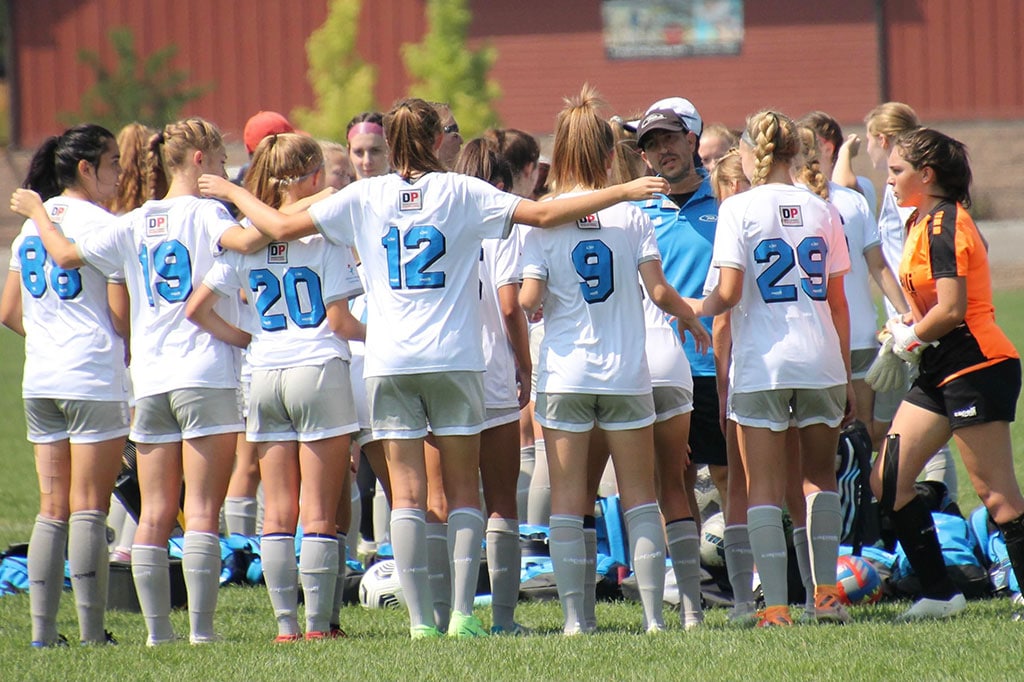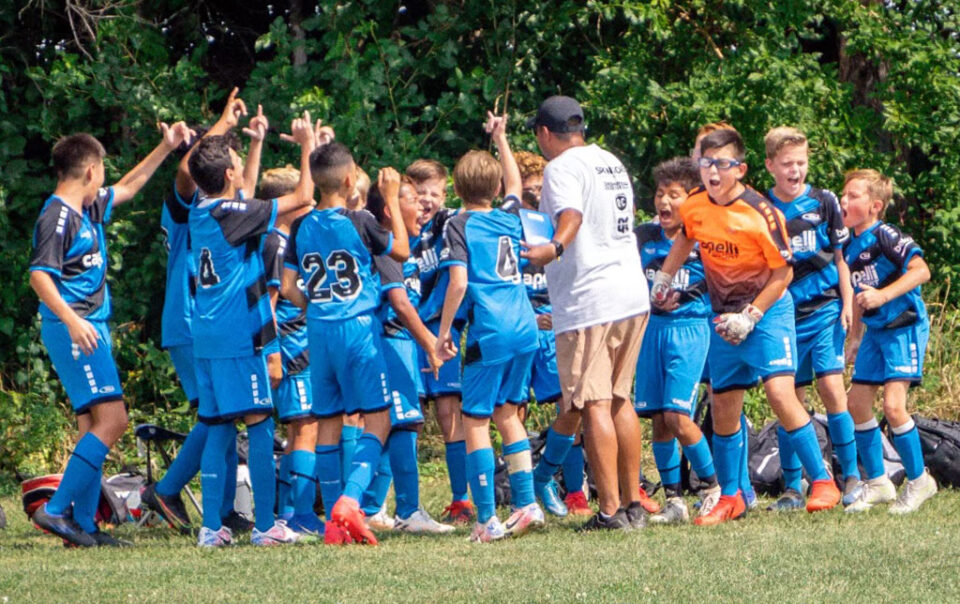This article was written by Pablo Toledo, Rush Soccer’s Sporting Project Director.
I’ll start with an honest comment: I totally made the following two mistakes when I started coaching.
I was starting my coaching career and I had decided after studying and hearing from more experienced professionals that I wanted to give equal playing time, so suddenly I found myself coaching games in which I was spending most of my time trying to fight the clock and make it as balanced as possible for all of my players.
I had also studied and was supportive of the idea that a developing player should not specialize positionally too early, so as my team was under the generally referenced age of 13 to start the specialization process, I was playing, within the game, many of my players in different positions.
You can imagine how chaotic and complicated it can be to try to coach a game in which you’re trying to accomplish both things simultaneously: Give equal playing time to all, and allow players to experience multiple positions. It was a mess and I had so much going on that my coaching was almost completely based on administering these two factors.
It didn’t take me long to fix the second one and say: “Ok, I do want these players to experience different positions, but that doesn’t mean they have to all do it within the same game. Let’s spread that out”, so suddenly Danny that year was playing some games as a mid and some others as a defender, and here and there as a forward. Good, we got that one sorted out.

Now for the always debated topic of playing time. I re-stated my resolution that I still support to this day: Give equal playing time. Just because Danny is a bit better today than Johnny, that doesn’t give him an automatic pass to have more developmental opportunities. What if Johnny is just a late developer? Does he deserve to get less opportunities to develop his potential just because of that? The answer is no, so the problem to solve is how we can give equal playing time without going into the craziness of my early days. The Rush Way 80-20 gave me the answer. Read it below from the Rush Way Philosophy.
Playing Time
Playing time for any individual is completely at the coach’s discretion. Rush encourages that playing time at all levels should be equal throughout the season. At the younger developmental ages, players should be exposed to as much of the game as possible. Limiting team roster size will aid in increased playing time for all players.
At the older/higher levels there will be instances when playing time will vary from game to game, but if player placement has been completed correctly, then equal playing time throughout the year should be achieved. For instance, of your ten field players, this could mean you play eight of your starters and play two of your weaker players, 80/20 rule. This will provide a more balanced level of play. Especially in the youth division, starters should vary throughout the season.
Simple and effective solution. If one day, because the game was like this or like that, Suzie played more than Jenny, you don’t have to feel so bad about it, maybe next game Jenny plays more. Sometimes this happens naturally and you don’t even need to plan it so much.
At the younger ages, I think the 80-20 is also great to remove the “I’m a sub feeling”. As you constantly rotate the starting team, everybody feels important.
Tim Schulz, Rush Soccer’s President & CEO, and the founder of the club, talked to us about this during a podcast interview highlighting this same last point.
However, I do think that the 80-20 loses strength as the players enter the last couple of years at the club. U17+ to use an age group as a reference. Even if I truly think and frequently tell my players that to be a starter within my team doesn not necessarily mean I consider them better, because players are different and might offer diverse skill sets and there are so many reasons why a coach might pick this or that starting team, it is true that most of the times there is a certain tendency, or a certain preference for an eleven, and at this stage I don’t want to shy up from actually talking about starters and subs, and the reason for that is that we get close to the performance stages that they aspire to (whether it is college or professionalism), and this is how it will be then, so I care about preparing them to deal with adversity if they’re not in the first eleven. To be a good sub is actually something that you can learn and I know many high level coaches that look at this because they want to know if a player, in case they’re substitutes, will still contribute to the group or will become a cultural assassin (quoting Damien Hughes on his book ‘The Barcelona Way: Unlocking The DNA Of A Winning Culture’). In fact, when we spoke to Fernando ‘Bocha’ Batista, who at the time was Argentina’s U20 & U23 MNT Head Coach, he made a strong emphasis on this topic.
Beyond that aspect, I don’t want to be hypocritical. The players realize that there are teammates that I overall think are my first picks, so I don’t want to lie to them.
Lastly, this actually allows me to also coach the starters to be good starters, so I tell the group openly: If you’re in the first eleven, train hard to stay in it and know that I support you even if you have a couple bad games, don’t fear to be on the edge because you got up with the wrong foot today, and if you’re a sub, work even harder to prove me wrong and know that if you make it to the first 11, I’ll support you just like I did with the player that was starting before.
Maybe there’s a better way, but I think you stay honest, loyal, and fair to your players when you approach it like this.
In summary and to make it a simple rule of thumb, use the 80-20 until they reach U17 and from there move progressively to a more similar format to what they’ll experience at performance stages. This might be obvious, but basically we are saying: The closer you get to performance stages, the more we try to resemble the environment.









